A previous post on this blog outlined the struggle that many SaaS businesses face in driving a company’s product vision, strategy, design, and execution. That prior post offered some general concepts and terms aimed at demystifying this weighty responsibility, which includes codifying a well-informed product idea into a clear and compelling vision, and then translating that vision into a manageable action plan for a team. For the sake of brevity here, we’ll call those collective efforts “product management.” This post tackles the same topic, but instead examines how organizations evolve and mature in terms of developing product management capabilities as a core SaaS discipline.
Why focus on this topic? First, because product management is really hard; and many companies struggle with it. Second, because virtually every product management organization is trying to improve. And third, because we as humans inevitably want to run before we can walk. Similarly, many organizations naively desire to jump directly from their current-state (whatever that may be) into being a sophisticated, best-in-class product management machine. But it doesn’t work that way; there are no shortcuts. Rather, to be able to run a marathon, we need to commit to lacing up our metaphorical jogging shoes and following an increasingly rigorous training plan, in order to properly prep for race-day.
To be clear, this post does not pretend to be a step-by-step product management training plan. Rather, it intends simply to offer a competency model that captures what we’ve observed across many years and multiple SaaS businesses. Specifically, it lays out a competency framework for thinking about key milestones along an organization’s evolutionary journey in product management. Again, why? Because, although it is helpful to know what “great” looks like, it is also valuable to have a clear vision for what is one step beyond today’s current state. And, because every great journey starts with a single step, let’s get going.
First, we’ll need to agree on a simple premise: the better an organization is at product management, the greater and more positive that function’s impact is on the current and future performance and outcomes of a business. Now, if we were to plot that concept on X and Y axes, it might look something like this:
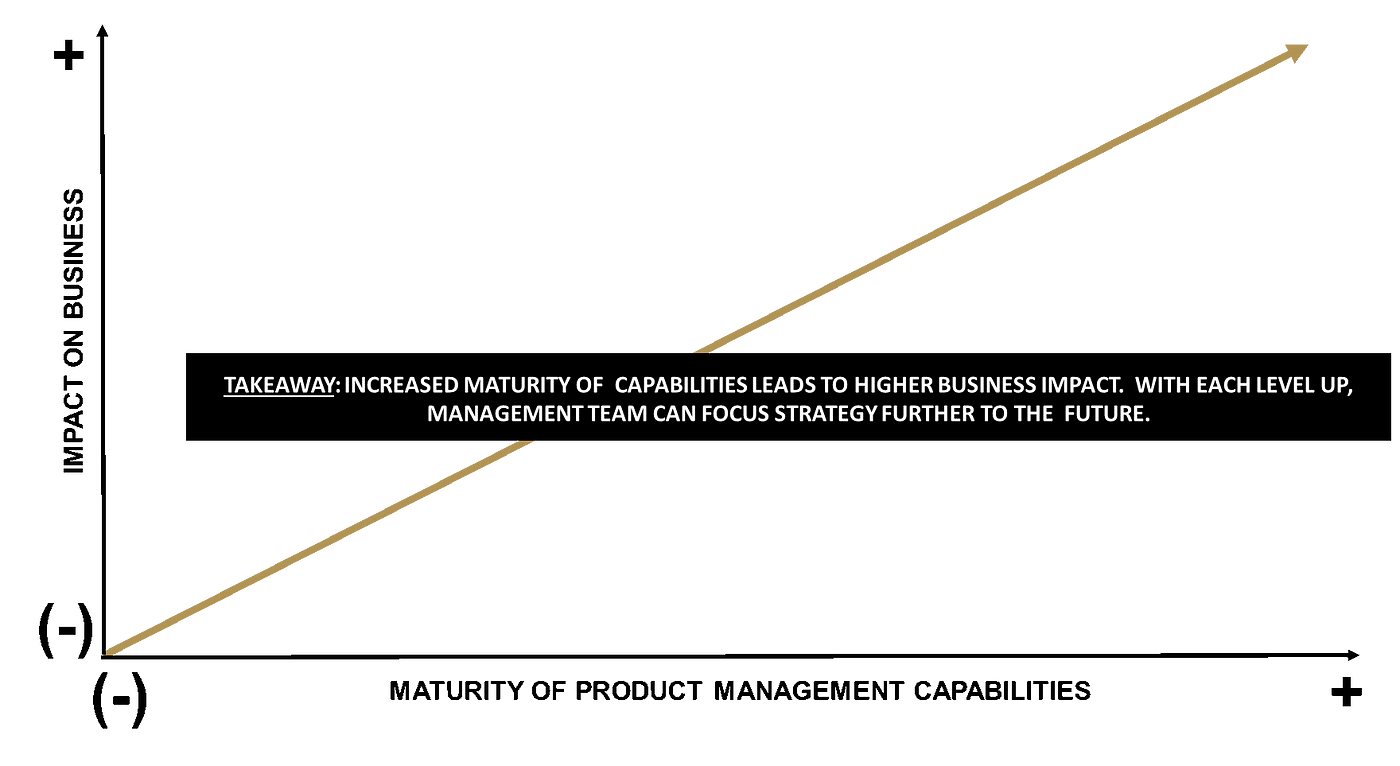
Setting aside for one moment the wide-ranging skills and capabilities that fall within the general heading of product management, let’s also agree that product management competency can range from very low (poor) to very high (expert), offering two ends of a spectrum. Using the “Maturity / Impact” construct above, it’s fair to state that the very lowest performing product management function has a correspondingly low (or even negative) impact on the related business. One might even say that the impact on the business is one of creating “chaos” (or at least failing to avoid it). Conversely, the most highly evolved product management organizations have a massively positive effect on their companies / products / customers. We’ve observed this to have a “transformational” impact on those same sets of stakeholders. In between these two poles, there are increasingly impactful gradations. We tend to think about it in the following five phases of maturity / evolution, as follows:
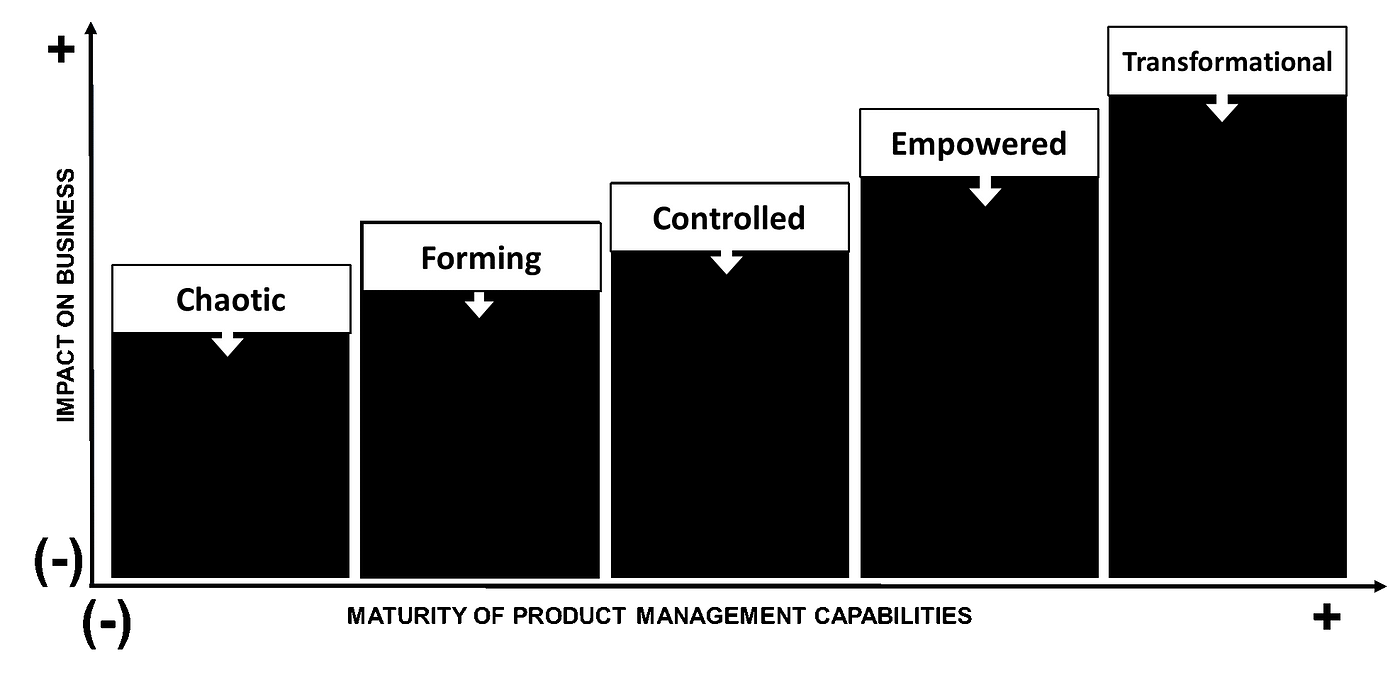
Please note: the above is NOT scientific or drawn to any scale. If it were to be drawn to scale, however, I believe the positive impact of Transformational product management capabilities (the last bar of the graph) would be orders of magnitude higher than the Chaotic or even Forming PM capabilities bars. They are simply incomparable in value.
Separately, there is another dimension to all of this; let’s turn our attention to the buckets of activities that comprise the product management function. Although there are countless ways to think about these responsibilities, we like to think about them in four general categories, as follows:
Within and across these four categories, there are a virtually limitless set of activities or tasks for which product management is responsible. The graphic below lays out a representative set of activities; and we think these are some of the more important ones. Because Culture supports and enables the other three categories, we draw it as follows:
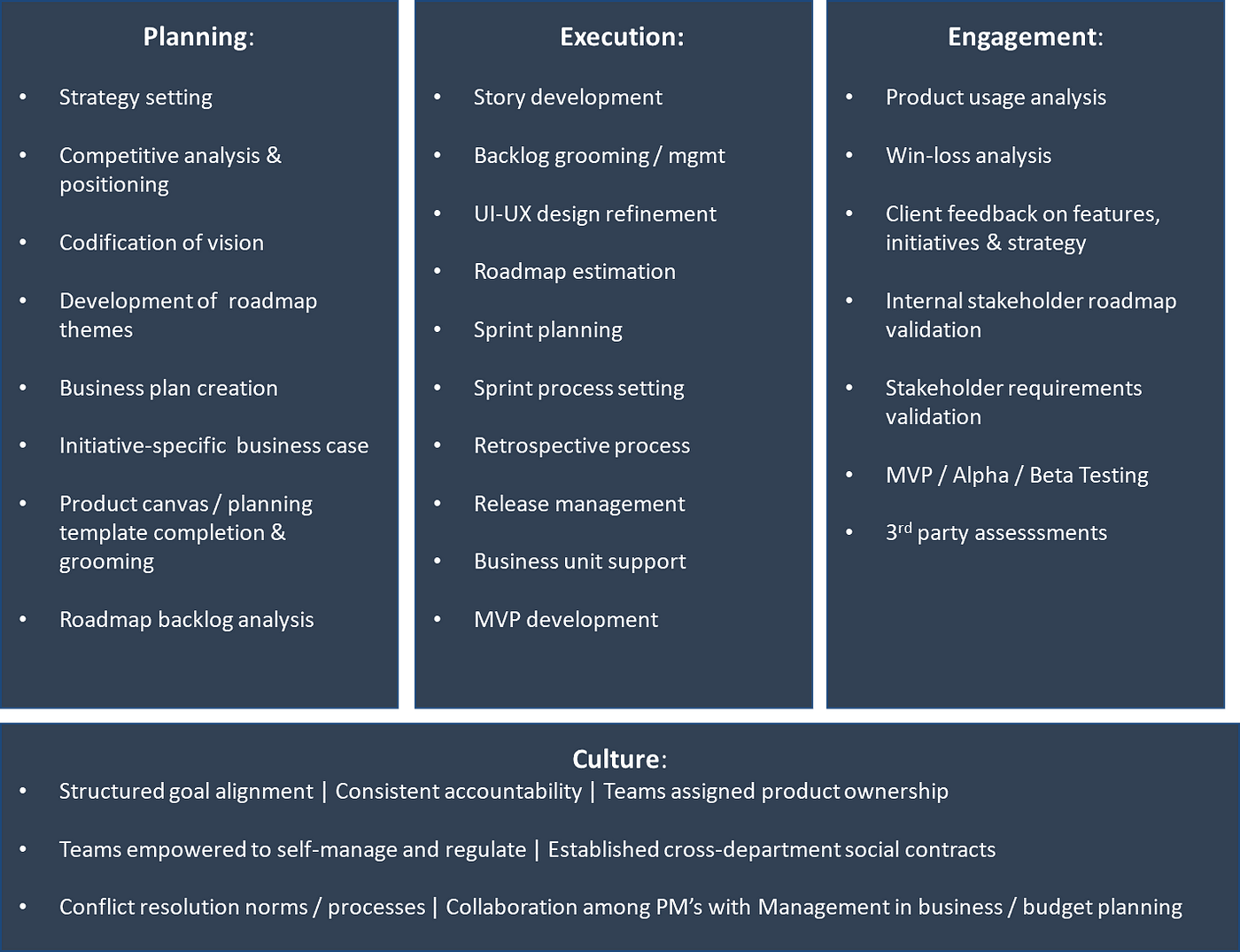
Hopefully none of these bulleted items are terribly surprising to anyone who has spent time in a SaaS business. Unfortunately, there is a gap between knowing and doing, so a number of these items are frequently neglected or only nominally completed. In fact, when color-coded for what is comprehensively addressed (WHITE) versus NOT well-covered (GOLD) in a typical small-scale company, the list might look more like this:
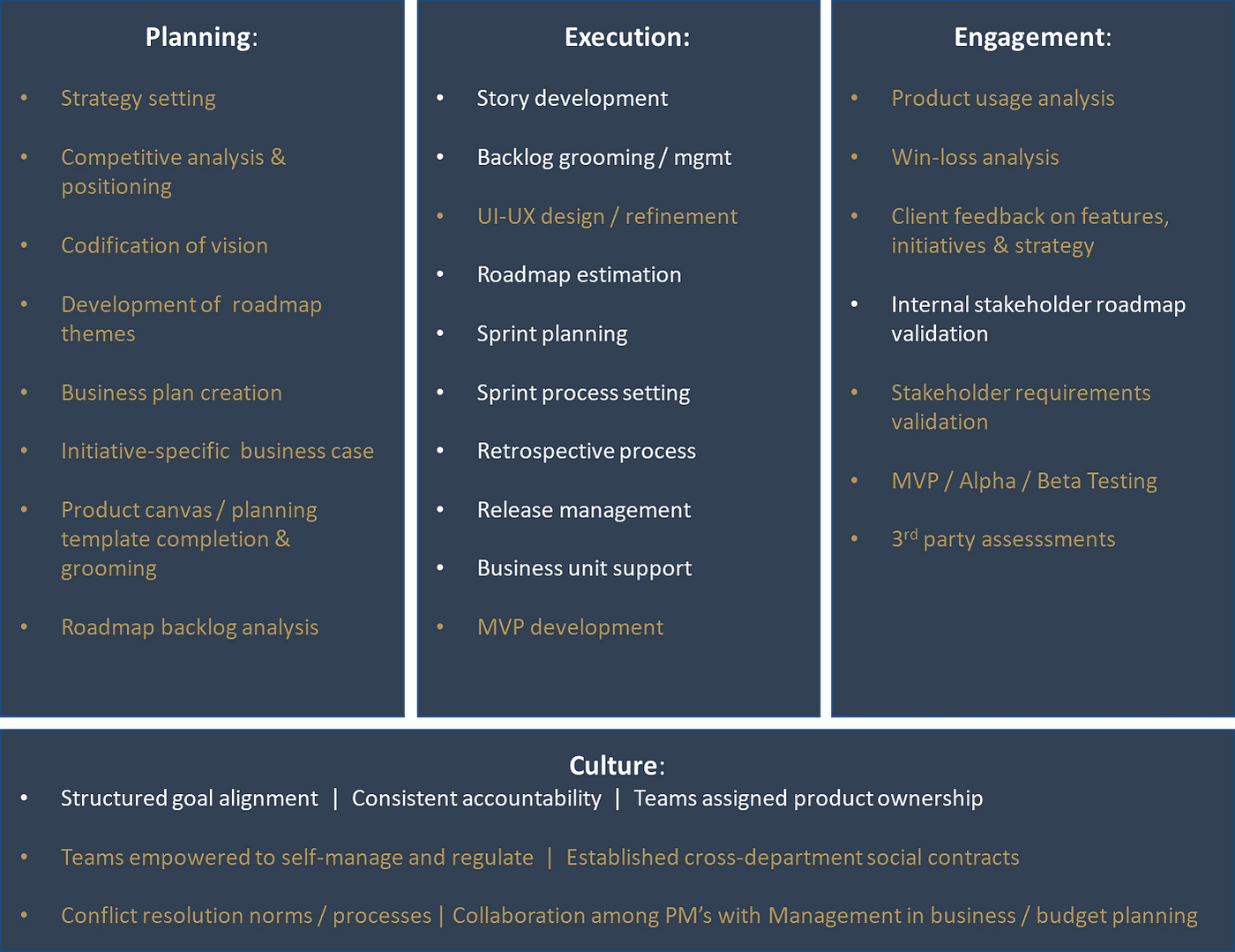
Said another way, small-scale SaaS companies’ product management competency can be quite high in some areas, but quite low in others. And while this is arguably interesting in its own right, these activities become much more useful when overlaid with the phases of maturity outlined above. Specifically, performance levels across these categories dictate where an organization falls on the Maturity / Impact graph introduced at the outset. The graphic below identifies how Planning, Execution, Engagement, and Culture look at various phases of Maturity / Impact. This graphic brings it together, as follows:
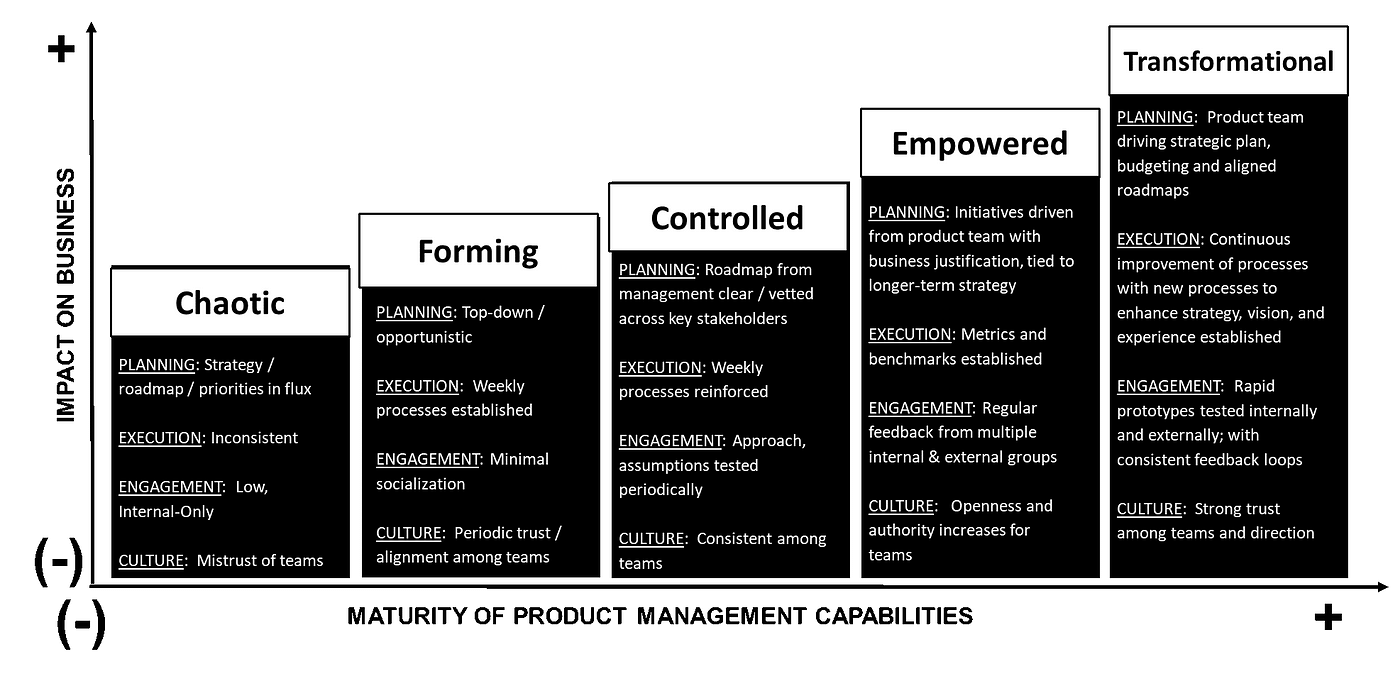
Hopefully this model is helpful in its own right. But what we have found most valuable are the insights it has helped catalyze within SaaS businesses. I’ll share one of ours here:
Sample Learning: The framework allows managers to more easily and granularly understand how their teams are spending their time. Specifically, it was only when we bucketed activities, surveyed teams, and color-coded activities that we began to pinpoint unhealthy imbalances in allocation of time and resources. What we learned was that growing SaaS businesses we work in tend to be very focused on (and good at) cranking out the most pressing work (Execution). In fact, we’ve seen teams that focus 90% of their time on delivery of the current roadmap. Conversely, these companies tend to vastly under-invest in thoughtful, rigorous Planning, which can account for less than 10% of a product team’s time. Likewise, few resources tend to be directed toward getting consistent, multi-sourced feedback about that work (Engagement). If time and talent are a company’s most valuable resources, we should undoubtedly make sure that we’re using them wisely, through better Planning and Engagement. What this framework also taught us, unfortunately, is that you are only as good as your worst weakness. In other words, even if you are highly evolved in Execution or even Culture, you simply can’t make major strides forward on the Maturity / Impact framework if your Planning and Engagement are holding you back or dragging you down.
Having said all of the above, the looming question remains — what can product management organizations do to improve? In other words, how can we jump to the right on this Maturity / Impact graph? And, more tangibly, what tools or exercises can we implement to help get us there? Having now introduced this framework, it’s my plan to go into some of these tactics and tools in future post here on Made Not Found.
Thank you: I’d like to acknowledge and thank my good friend and former colleague Paul Miller for his contributions to this post. Paul has a clear, disciplined, creative product mind; and his thoughts shaped much of the above. It’s been fun noodling these ideas over the years with Paul; and he has been an invaluable collaborator in our shared and never-ending effort to get better at product management.